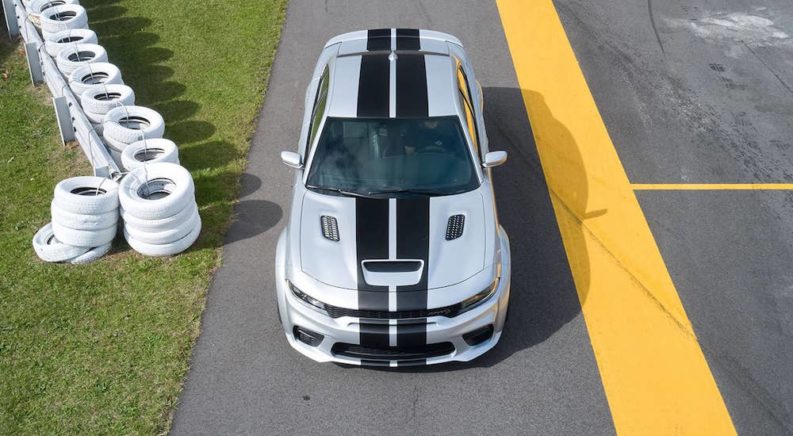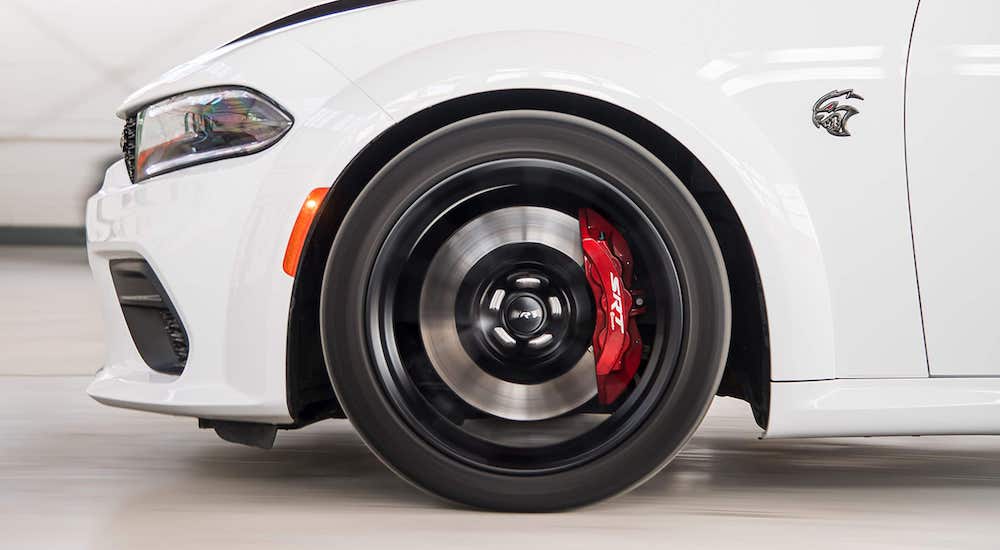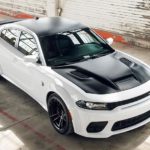They say all good things must come to an end, and unfortunately, that well-worn maxim applies to the auto industry. Dodge made waves in late 2021 with the announcement that the Charger and Challenger would cease production at the end of 2023 as the brand makes way for a new generation of electric vehicles, including an all-electric muscle car, plug-in hybrid, and as-of-yet unannounced third electric offering. However, fans of Dodge’s unique slate of high-performance sedans can take comfort in the fact that while the automaker plans to phase out some gas-powered models, there’s still plenty of fun in store for the future. “The days of an iron block supercharged 6.2-liter V8 are numbered,” said Dodge CEO Tim Kuniskis, “but the performance that those vehicles generate is not numbered.”
While it’s sad to see this storied muscle car end its current run, there’s still time to visit your local Dodge Charger dealer. The automaker plans on having the Charger go out with a bang, offering a selection of one-of-a-kind features that will make the 2023 model one for the ages. These include a new palette of classic color options, a limited-edition “Last Call” plaque mounted under the hood, and most importantly, a Jailbreak Edition that allows drivers to unlock increased horsepower and countless other customization options from seats, brake calipers, and logos to sound systems, spoilers, and exhaust tips.
It’s a fitting end for the classic muscle car. While the industry has proven adept at converting such models to an all-electric format without losing the high-octane fun that sets them apart from the crowd, we’re still sad to see Dodge’s legendary Hellcat engine go the way of the dodo. Given the supercharged V8 engine’s impending demise, we thought it would be the perfect time to look back at the history of the Hellcat and see how the massive engine powered Dodge to muscle car dominance over the last decade.
Reviving an Icon
While the Hellcat engine made its debut in 2015, we have to travel back to 2005 to truly understand the impact the engine would have on the industry. It was in this year that Dodge revived the Charger nameplate after an almost 20-year absence, bringing back a classic, performance-oriented sedan that originally debuted in 1966. The second coming of the Charger allowed Dodge to compete in the ultra-competitive American muscle car wars, which had long been dominated by the Ford Mustang and Chevy Camaro.
The revived Charger was a worthy entry into the category, boasting a range of powerful engines and a host of high-end technology that made it easy to take advantage of all the power the muscle car had to offer. Features like a five-speed automatic transmission with AutoStick manual shifting mode, all-speed traction control, and electronic stability control top the list, but it was under the hood where the Charger truly shined. The base model’s 2.7-liter V6 engine wasn’t designed to blow any minds at 190 hp, but the sixth-generation Charger’s HEMI V8 engines were another story altogether. A 5.7-liter and a 6.1-liter graced the Charger R/T and SRT-8 models, giving drivers a major upgrade in terms of power and performance with 340 hp and 425 hp, respectively.
Dodge once again upped the ante when it debuted the seventh-generation Charger in 2011. Along with a long list of upgrades to the interior and exterior, the next-gen Charger also saw a significant increase in base power with a 3.6-liter Pentastar V6 engine giving the muscle car 292 hp and 260 lb-ft of torque to play with. On higher trims, two powerful V8 engines made it hard for drivers to complain about a lack of power, with the 6.4-liter V8 topping out at 485 hp and 475 lb-ft of torque. While this is likely enough power for the average driver, American muscle cars have always prided themselves on their spirit of excess, and Dodge still had a few tricks up its sleeve.
Cat Out of Hell
The Hellcat engine started out as little more than a rumor in the always gossipy auto industry. When word got out that Dodge was working to build one of the most powerful engines to ever grace an American muscle car, competitors took note, with Ford even going as far as launching a 662 hp motor for the Mustang in response. “We wanted to make a statement and move the brand forward,” said Chris Cowland, director of SRT powertrain development at Dodge.
And move it forward, they did. When the first Hellcat engine hit Dodge’s showrooms, the 6.2-liter, supercharged 707 hp engine surpassed all expectations. Breaking the 700 hp barrier immediately set the Charger apart from the crowd, putting rivals on notice and proving what was possible with a little imagination and a lot of engineering. For example, the Hellcat engine is paired with a 14,600 RPM supercharger that can regulate the boost thanks to an electronic bypass valve. Integrated charger coolers on the Charger’s 2.4-liter blower help to chill the air below 140 degrees Fahrenheit before it hits the engine.
With 11.6 psi of boost, this supercharger setup is key to the Hellcat’s off-the-charts performance, and making it work was no small task. It takes 80 of the Hellcat’s 707 hp to get the hulking supercharger spinning in the first place, and regular components simply aren’t up to the job. To this end, Dodge had to replace the steel washers that typically secure the crankshaft pulley, opting instead for diamond-embedded steel washers, which provide three times the friction of normal steel washers. The Hellcat-powered Charger might fall on the more expensive side with a starting price north of $80,000, but at least you can say you’ve got diamond rings––er, washers––to show for it.
Improving on Perfection
Dodge has tweaked the Hellcat formula a few times since its debut in 2015 and now offers three distinct models. The standard SRT Hellcat now boasts 717 hp and 650 lb-ft of torque. In addition, there is the SRT Hellcat Redeye with 797 hp and 707 lb-ft of torque, and the new SRT Jailbreak, which boosts things up to 807 hp but keeps the 707 lb-ft of the Redeye’s High-Output Hellcat. It’s the sort of performance that is more at home on a drag strip than the average city street, providing more than enough power to add a little excitement to even the most mundane daily driving.
For those looking to really push the limits, Texas-based tuner Hennessey Performance Engineering offers modifications that allow the Charger to break the vaunted 1,000 hp barrier. The HPE1000 Redeye package gives the Charger a mindblowing 1,000 hp and 969 lb-ft of torque. With a zero to 60 time of 2.8 seconds, the Hennessey-enabled Charger Redeye should probably be legally classified as a rocket with wheels; at least, that’s the argument you’ll want to make down at the DMV.
The Hennessey package is pricey and will push the Charger’s overall price well into six-figure territory. Still, it comes with a long list of performance-minded upgrades like an overhauled supercharger system, new high-flow fuel injectors, an upgraded exhaust, and even a two-year/24,000-mile warranty. This upgraded Charger might not be for everyone, but it’s an alluring prospect for those looking to pull some serious Gs.
The Last Muscle Car
There’s no denying the Charger‘s impact on the world of muscle cars. When Dodge revived the model in 2005, it was more about playing catchup than breaking new ground. That would quickly change with the debut of the Hellcat engine, which upped the bar when it came to performance, power, and speed. Named after a supercharged World War II fighter plane, “Hellcat” was a fitting moniker for the record-breaking engine, which allowed Dodge to mow down the competition and make a case for the Charger as the new king of the hill in the world of American muscle cars. While it’s sad to see the model head off into the sunset, Dodge has given the Charger a fitting retirement with a marquee 2023 model that’ll be remembered for years to come. While we appreciate the automaker’s forward-thinking approach when it comes to electrification, we can’t say we won’t be a little nostalgic for the sound and fury of a true muscle car like the Dodge Charger.






